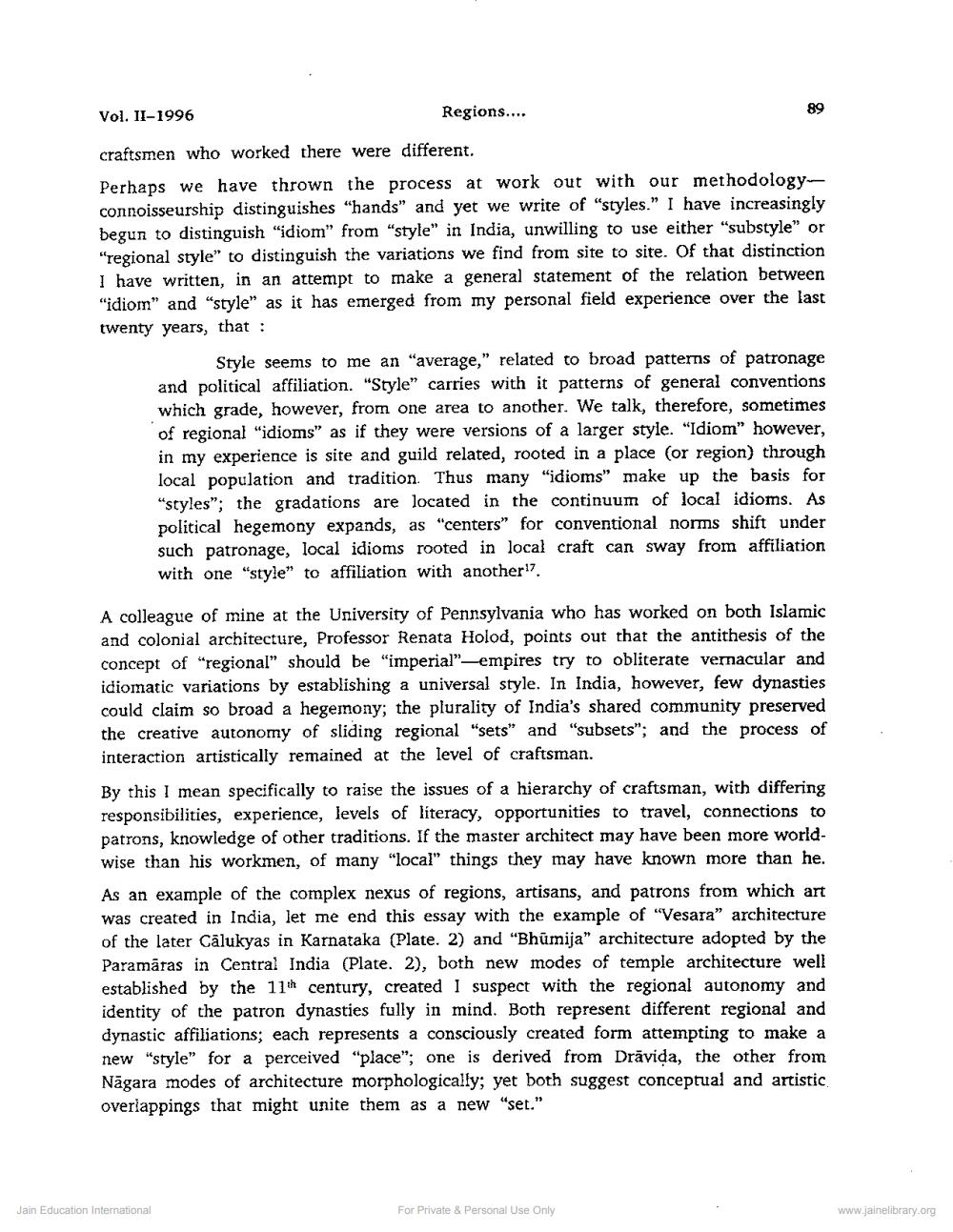Book Title: Regions and Indian Architectures Author(s): Michael W Meister Publisher: Z_Nirgrantha_1_022701.pdf and Nirgrantha_2_022702.pdf and Nirgrantha_3_022703.pdf View full book textPage 3
________________ Vol. II-1996 Regions.... craftsmen who worked there were different. Perhaps we have thrown the process at work out with our methodologyconnoisseurship distinguishes "hands" and yet we write of "styles." I have increasingly begun to distinguish "idiom" from "style" in India, unwilling to use either "substyle" or "regional style" to distinguish the variations we find from site to site. Of that distinction I have written, in an attempt to make a general statement of the relation between "idiom" and "style" as it has emerged from my personal field experience over the last twenty years, that : 89 Jain Education International Style seems to me an "average," related to broad patterns of patronage and political affiliation. "Style" carries with it patterns of general conventions which grade, however, from one area to another. We talk, therefore, sometimes of regional "idioms" as if they were versions of a larger style. "Idiom" however, in my experience is site and guild related, rooted in a place (or region) through local population and tradition. Thus many "idioms" make up the basis for "styles"; the gradations are located in the continuum of local idioms. As political hegemony expands, as "centers" for conventional norms shift under such patronage, local idioms rooted in local craft can sway from affiliation with one "style" to affiliation with another17. A colleague of mine at the University of Pennsylvania who has worked on both Islamic and colonial architecture, Professor Renata Holod, points out that the antithesis of the concept of "regional" should be "imperial"-empires try to obliterate vernacular and idiomatic variations by establishing a universal style. In India, however, few dynasties could claim so broad a hegemony; the plurality of India's shared community preserved the creative autonomy of sliding regional "sets" and "subsets"; and the process of interaction artistically remained at the level of craftsman. By this I mean specifically to raise the issues of a hierarchy of craftsman, with differing responsibilities, experience, levels of literacy, opportunities to travel, connections to patrons, knowledge of other traditions. If the master architect may have been more worldwise than his workmen, of many "local" things they may have known more than he. As an example of the complex nexus of regions, artisans, and patrons from which art was created in India, let me end this essay with the example of "Vesara" architecture of the later Calukyas in Karnataka (Plate. 2) and "Bhumija" architecture adopted by the Paramāras in Central India (Plate. 2), both new modes of temple architecture well established by the 11th century, created I suspect with the regional autonomy and identity of the patron dynasties fully in mind. Both represent different regional and dynastic affiliations; each represents a consciously created form attempting to make a new "style" for a perceived "place"; one is derived from Dravida, the other from Någara modes of architecture morphologically; yet both suggest conceptual and artistic overlappings that might unite them as a new "set." For Private & Personal Use Only www.jainelibrary.orgPage Navigation
1 2 3 4 5 6 7 8
